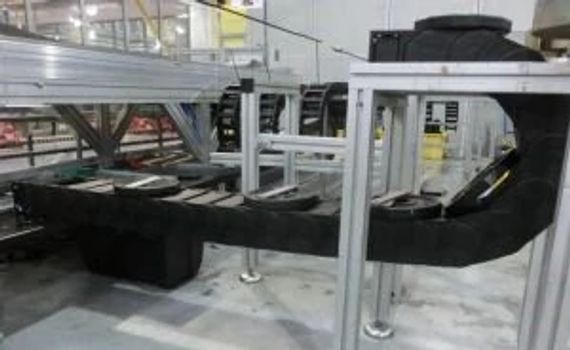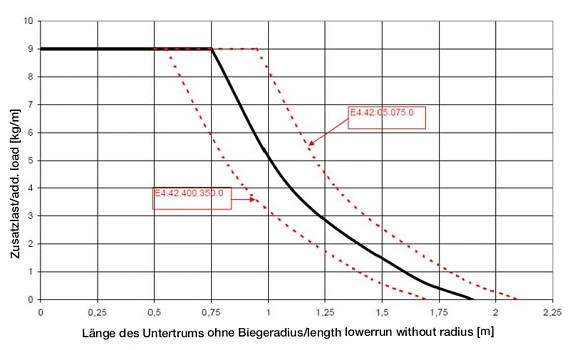Definition of FLU and FLP
In addition to the most common installation types unsupported (FLG), unsupported with sag (FLB) and gliding, there are others that have a few special features. Here we introduce you to two additional installation types: the projected unsupported length FLP and the unsupported lower run FLU.
Unsupported lower run FLU
What does unsupported lower run mean?
One speaks of an unsupported lower run FLU as soon as part of the lower run of the energy chains is not supported. This type of installation enables a compact design in which the range of the work area comes as close as possible to the footprint of the machine - thus saving space.| Our recommendation: For short strokes of up to 2m, it can be an attractive alternative to create more space while maintaining the same machine dimensions. |

Special features of the unsupported lower run
1. At least the first three chain links of the lower run should be supported to reduce the force on the mounting bracket.
2. Supported chain links do not count as part of the FLU area.
2. Supported chain links do not count as part of the FLU area.
3. The maximum unsupported length of the lower run is approximately 1/3 less than the unsupported length FLG.
4. The maximum speed and acceleration data are the same as for the unsupported length with sag FLB.
4. The maximum speed and acceleration data are the same as for the unsupported length with sag FLB.
Tests conducted in the test laboratory
Through extensive testing, it is possible to determine the fill weight of the most common energy chain series E4.1, E4Q or E2/000.


Projected unsupported length FLP

What does projected unsupported length mean?
In some applications, the energy chains are often used with an inclined working distance. The projected unsupported length FLP installation type is often used in construction machinery or work platforms.You might also be interested in
Other installation types
Discover other types of installation ranging from unsupported applications and gliding applications to side-mounted applications.
Discover other types of installation ranging from unsupported applications and gliding applications to side-mounted applications.
Discover now
Energy chains Wiki
Here you can find the most important information about the energy chain design - basics and calculation, filling rules and more.
Here you can find the most important information about the energy chain design - basics and calculation, filling rules and more.
Find out more now

